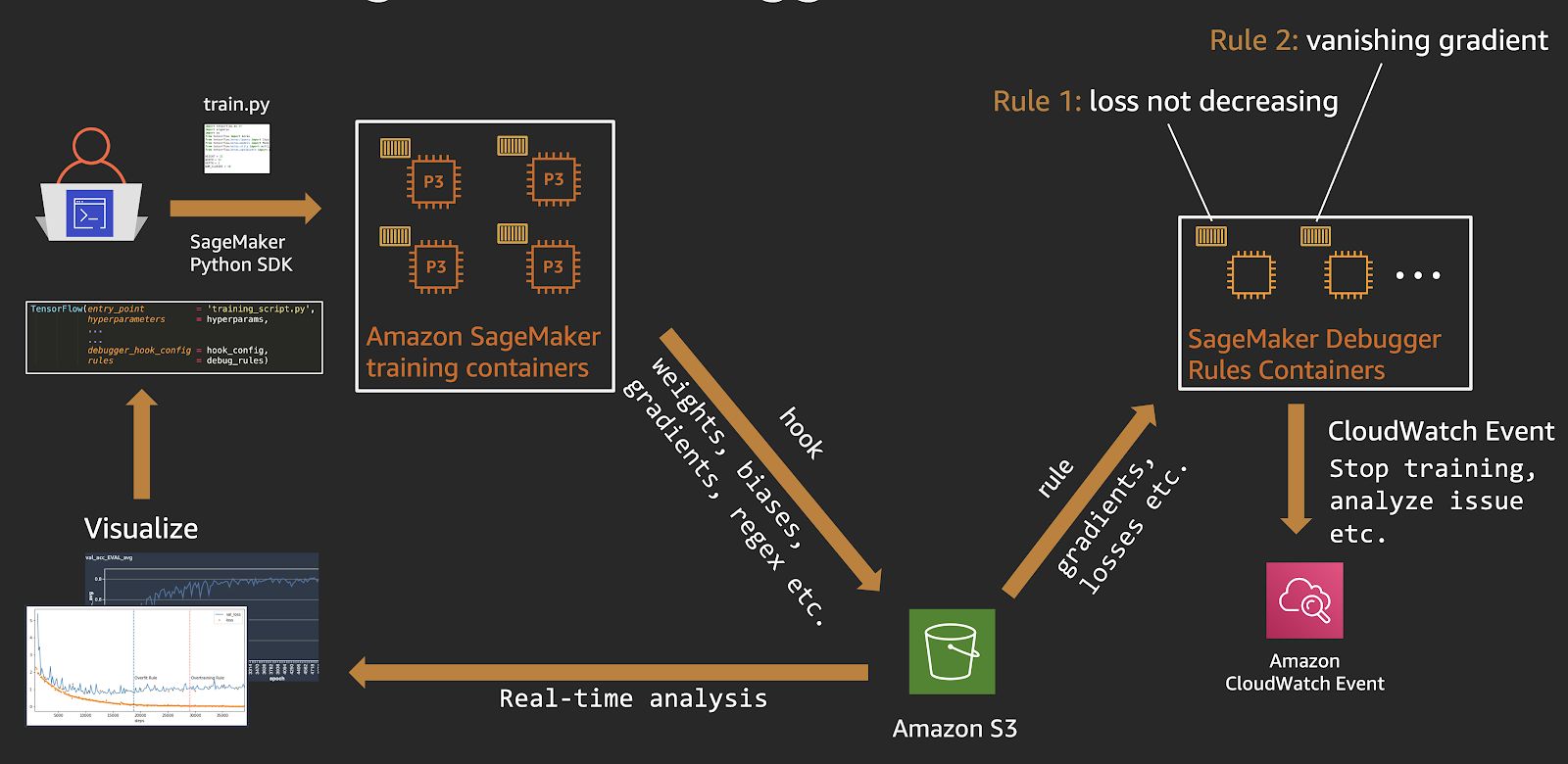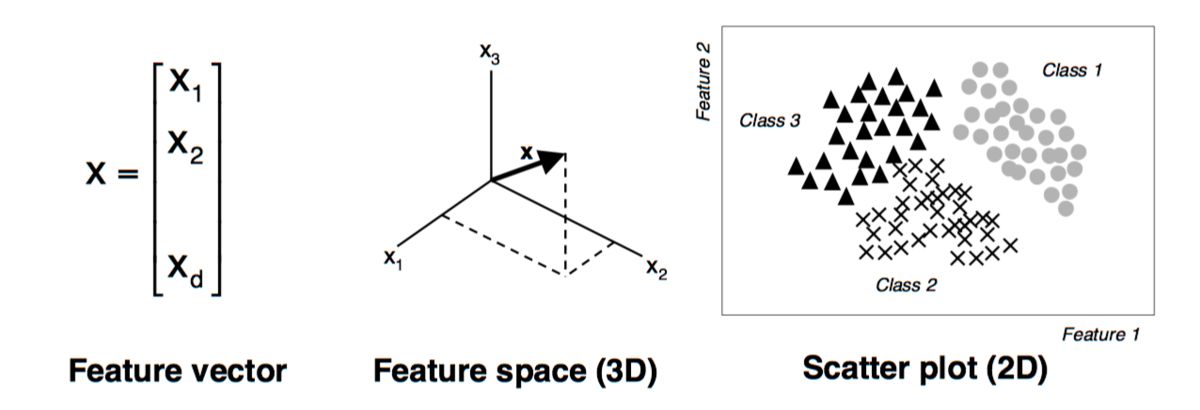Introduction
Welcome to the world of machine learning engineering! In today’s rapidly evolving technological landscape, the demand for professionals who can harness the power of machine learning (ML) to solve complex problems is skyrocketing. At the forefront of this emerging field is the machine learning engineer, a skilled and versatile individual who combines programming expertise with a deep understanding of data analysis and statistical modeling.
Machine learning engineers play a crucial role in creating and deploying ML algorithms that enable computers to learn and make decisions without explicit programming. They bridge the gap between data scientists, who focus on developing and refining ML models, and software engineers, who integrate those models into real-world applications.
In this article, we will delve into the world of machine learning engineering, exploring the education and skills required, as well as the responsibilities and tasks that these professionals undertake on a daily basis. Whether you are considering a career in machine learning engineering or simply interested in understanding the role, this comprehensive guide will provide valuable insights.
But first, let’s define what exactly a machine learning engineer does and how they contribute to the field of artificial intelligence.
Definition of a Machine Learning Engineer
A machine learning engineer is a specialized professional who combines computer science, mathematics, and statistical analysis to design, develop, and deploy machine learning models and algorithms. This field is integral to the broader field of artificial intelligence (AI), as it focuses on teaching computers to learn from data and improve their performance over time. Machine learning engineers utilize advanced algorithms and statistical techniques to extract knowledge and insights from vast amounts of data.
These professionals are responsible for understanding the problem at hand, selecting appropriate ML techniques, and transforming raw data into valuable and actionable information. They work closely with data scientists and software engineers to develop and refine ML models, ensuring their efficiency, accuracy, and scalability.
Machine learning engineers possess a strong foundation in computer science and programming languages such as Python, Java, or C++. They are skilled in algorithm design, data manipulation, and statistical modeling. Additionally, they have a deep understanding of data structures, database management, and distributed computing systems.
Another crucial aspect of a machine learning engineer’s role is domain expertise. They must possess a thorough understanding of the industry or domain in which they are working. This knowledge is essential for identifying relevant variables, feature engineering, and interpreting ML model outputs in a meaningful way. By combining technical skills with domain expertise, machine learning engineers can effectively develop and deploy ML solutions that address real-world problems.
In summary, a machine learning engineer is a multidisciplinary professional who brings together expertise in computer science, statistics, and domain knowledge to build and deploy sophisticated ML models. Their work lies at the intersection of data analysis, programming, and artificial intelligence, making them vital contributors to the advancement of technology and innovation in various industries.
Education and Skills
Becoming a machine learning engineer typically requires a solid educational foundation in computer science, mathematics, or a related field. While specific educational requirements may vary, most employers seek candidates who hold at least a bachelor’s degree in a relevant discipline.
A strong background in computer science is essential for machine learning engineers. This includes knowledge of programming languages such as Python, Java, or C++. Understanding data structures, algorithms, and object-oriented programming is crucial for implementing and optimizing ML models efficiently. Additionally, proficiency in tools and libraries commonly used in machine learning, such as TensorFlow, PyTorch, or scikit-learn, is highly desirable.
A solid grasp of mathematics and statistics is also critical for machine learning engineers. Concepts like linear algebra, calculus, probability, and statistics form the foundation of many ML techniques. Understanding these mathematical principles enables engineers to construct and interpret ML models effectively.
In addition to technical skills, machine learning engineers should possess strong problem-solving abilities. They must be able to analyze complex problems, break them down into smaller components, and devise innovative solutions using ML techniques. Attention to detail, logical reasoning, and critical thinking are essential for successfully tackling real-world challenges.
Given the fast-paced nature of the field, machine learning engineers must also have a thirst for continuous learning. Staying up-to-date with the latest advancements in ML algorithms, frameworks, and tools is crucial for remaining competitive. Engaging in online courses, attending workshops, and participating in industry conferences can help enhance skills and knowledge in this rapidly evolving field.
In summary, a strong educational background in computer science or a related discipline, along with proficiency in programming languages, mathematics, and statistics, is foundational for a career as a machine learning engineer. Combined with problem-solving abilities and a commitment to ongoing learning, these skills empower engineers to excel in their roles and contribute to the growing field of machine learning.
Job Responsibilities
As a machine learning engineer, you will take on a range of responsibilities related to designing, developing, and deploying machine learning models and algorithms. These responsibilities may vary depending on the organization and project, but here are some common tasks that you can expect to encounter:
- Collecting and Pre-processing Data: Machine learning models rely on high-quality and relevant data. One of your key responsibilities will be to gather, clean, and prepare data for analysis. This involves tasks such as data cleaning, feature engineering, and handling missing values.
- Building and Training ML Models: You will apply machine learning techniques to train models using the prepared data. This includes selecting appropriate algorithms, tuning hyperparameters, and optimizing model performance.
- Model Evaluation and Optimization: As a machine learning engineer, you need to assess the performance of your models. This involves evaluating metrics such as accuracy, precision, recall, and F1 score. Additionally, you will work on fine-tuning the models to improve their performance.
- Implementing ML Solutions: Once the models are trained and optimized, you will collaborate with software engineers to integrate them into real-world applications. This involves deploying ML algorithms and ensuring their scalability, efficiency, and reliability.
- Collaboration with Data Scientists and Software Engineers: Machine learning engineers often work in interdisciplinary teams, collaborating with data scientists to leverage their expertise in algorithm development and analysis. Additionally, you will work with software engineers to ensure seamless integration and deployment of ML models.
- Staying Up-to-Date with Latest ML Techniques: Given the rapid pace of advancements in machine learning, staying current with new algorithms, frameworks, and tools is crucial. You will invest time in continuous learning, exploring new techniques and technologies to enhance your skills.
These responsibilities highlight the diverse range of tasks that machine learning engineers undertake. From working with data to building, optimizing, and deploying ML models, their expertise is essential in applying machine learning to real-world problems and driving innovation across industries.
Data Collection and Pre-processing
As a machine learning engineer, data collection and pre-processing are integral parts of your job. Before diving into building and training ML models, you need to ensure that you have access to high-quality and relevant data that can drive meaningful insights and predictions. Here are the key steps involved in data collection and pre-processing:
- Data Gathering: The first step is to identify and gather the necessary data for your project. This can involve exploring public datasets, accessing data from APIs, or working with internal databases. Depending on the project requirements, you may also need to collect data through surveys, web scraping, or other means.
- Data Cleaning: Raw data is often messy and contains inconsistencies, missing values, or outliers. Data cleaning involves identifying and handling these issues to ensure the data is accurate and reliable. This may include tasks such as removing duplicates, imputing missing values, or transforming variables to a consistent format.
- Feature Engineering: Feature engineering involves selecting, transforming, and creating relevant features from the available data. This step aims to enhance the predictive power of the models by providing meaningful representations of the underlying patterns or relationships in the data. Feature engineering can include techniques such as scaling, encoding categorical variables, or creating new derived features.
- Data Splitting: To assess the performance of your machine learning models, you need to split the data into training, validation, and testing sets. The training set is used to train the model, while the validation set helps in fine-tuning and optimizing hyperparameters. The testing set is used to evaluate the final performance and generalizability of the model.
In addition to these steps, you may also need to consider data privacy, security, and ethical considerations, especially when dealing with sensitive or personal data. Compliance with data governance policies and regulations is crucial to ensure the responsible and ethical use of data.
Data collection and pre-processing require attention to detail, domain knowledge, and an understanding of the specific requirements of the project. Clean and well-prepared data sets the foundation for accurate and reliable machine learning models, allowing for better insights and predictions in real-world scenarios.
Building and Training ML Models
Once you have collected and pre-processed the data, the next step as a machine learning engineer is to build and train the ML models. This involves selecting the appropriate algorithms and techniques, tuning hyperparameters, and evaluating the performance of the models. Here’s a breakdown of the key steps involved:
- Selecting ML Algorithms: Depending on the nature of the problem, you need to choose the most suitable machine learning algorithm or ensemble of algorithms. This can range from popular ones like linear regression, decision trees, and support vector machines, to more advanced algorithms like deep learning or random forests.
- Feature Selection: If your dataset contains a large number of features, it may be necessary to perform feature selection to identify the most relevant ones for the task at hand. This can help reduce model complexity, prevent overfitting, and improve performance.
- Hyperparameter Tuning: Each ML algorithm comes with its own set of hyperparameters that control the behavior and performance of the model. You will need to experiment with different combinations of values for these hyperparameters and use techniques like grid search or random search to find the optimal configuration that maximizes model performance.
- Model Training: With the selected algorithm and optimized hyperparameters, it’s time to train the model using the prepared training data. The model learns from the input data and adjusts its internal parameters to minimize the error or maximize the desired metric, depending on the learning objective. This process involves feeding the data through the algorithm, calculating predictions, and updating the model parameters iteratively.
- Model Evaluation: After training, you need to evaluate the performance of the model using the validation dataset. This involves comparing the predicted values with the actual values and calculating evaluation metrics such as accuracy, precision, recall, or mean squared error. Evaluating the model helps you understand how well it generalizes to unseen data and whether further optimization is needed.
Building and training ML models requires a combination of technical skills, domain knowledge, and an iterative and exploratory mindset. The process involves experimenting with different algorithms, hyperparameters, and data transformations to find the most effective combination for the given task. Continuous evaluation and refinement are key to developing robust and accurate ML models.
Remember that building ML models is not a one-size-fits-all approach. The selection of algorithms, hyperparameters, and feature engineering techniques should be tailored to the specific problem and dataset at hand. By carefully designing and training ML models, you can unlock valuable insights and make predictions that drive informed decision-making in various domains.
Model Evaluation and Optimization
Once you have built and trained your machine learning models, the next crucial step as a machine learning engineer is to evaluate their performance and optimize them for better results. This involves assessing the models’ accuracy, fine-tuning parameters, and employing techniques to optimize their performance. Here’s an overview of the model evaluation and optimization process:
- Evaluation Metrics: To evaluate the performance of your models, you need to define appropriate evaluation metrics based on the specific task and the nature of the data. For classification problems, metrics like accuracy, precision, recall, and F1 score are commonly used. For regression problems, metrics such as mean squared error or R-squared value are commonly employed. These metrics provide insights into how well the models are performing and help identify areas for improvement.
- Validation Set Evaluation: After training the models, you evaluate their performance using the validation dataset. This step is crucial for understanding how well the models generalize to unseen data and identifying any possible issues such as overfitting or underfitting. If the performance is not satisfactory, you can analyze the model behavior and make adjustments to improve its predictions.
- Model Optimization: To optimize the performance of the models, you may need to fine-tune their parameters. This process involves experimenting with different hyperparameter values, such as learning rate, regularization, or number of hidden layers, to find the optimal configuration that minimizes errors or maximizes desired metrics. Techniques like grid search or random search can aid in systematically exploring hyperparameter values.
- Regularization and Overfitting: Overfitting occurs when the model performs well on the training data but fails to generalize to new, unseen data. To mitigate overfitting, you can apply regularization techniques like L1 regularization, L2 regularization, or dropout regularization. These methods help prevent the models from excessively relying on specific features or patterns in the training data, promoting better generalization.
- Ensemble Methods: Ensemble methods involve combining multiple models to improve overall performance and mitigate the shortcomings of individual models. Techniques like bagging, boosting, or stacking can be employed to create diverse models and aggregate their predictions. Ensemble methods often yield more robust and accurate predictions by leveraging the collective intelligence of multiple models.
Model evaluation and optimization are iterative processes that require careful analysis, experimentation, and refinement. By evaluating and optimizing the models, you can enhance their accuracy, stability, and predictive power. Regularly assessing the models’ performance and implementing optimization techniques ensure that your ML solutions deliver reliable and valuable insights in real-world scenarios.
Implementing ML Solutions
As a machine learning engineer, your ultimate goal is to deploy ML solutions that can solve real-world problems and deliver value to end-users. Implementing ML solutions involves integrating ML models into production environments, ensuring scalability, efficiency, and reliability. Here are the key steps in implementing ML solutions:
- Model Deployment: After the ML models have been trained and optimized, it’s time to deploy them in the production environment. This can involve embedding the models into web applications, mobile apps, or other software systems. The models need to be integrated seamlessly with existing infrastructure and APIs to ensure smooth functionality.
- Scalability and Efficiency: ML models need to handle large amounts of data and efficiently process predictions to meet the requirements of real-world applications. As a machine learning engineer, you need to consider the scalability and efficiency of your ML solutions. This can involve optimizing code, leveraging distributed computing frameworks like Apache Spark, or utilizing cloud-based platforms that provide scalability and computational resources.
- Versioning and Monitoring: ML models are not static; they require continuous monitoring and updates. Implementing proper versioning and monitoring processes allows you to track changes, compare model performance over time, and identify issues or deteriorating accuracy. Incorporating logging and monitoring tools can help in detecting anomalies or model degradation, and trigger retraining or intervention as necessary.
- Performance Evaluation: Even after deployment, it is crucial to continuously evaluate the performance of the ML solutions in real-world scenarios. This includes monitoring metrics such as prediction accuracy, throughput, latency, and resource utilization. By identifying areas of improvement, you can fine-tune and optimize the deployed models to ensure they continue to deliver accurate and reliable results.
- Maintaining Model Updates: As data evolves and business requirements change, the deployed ML models may require periodic updates. This can involve retraining the models with new data, incorporating new features, or fine-tuning parameters to adapt to the changing landscape. Proper version control and deployment pipelines help streamline the process of updating and maintaining the ML solutions.
Implementing ML solutions involves a combination of software engineering skills, deployment expertise, and a deep understanding of ML concepts. It requires collaboration with software engineers, data scientists, and domain experts to ensure the successful integration of ML models into real-world applications. By effectively implementing ML solutions, you can harness the power of machine learning to drive innovation, automate processes, and make informed decisions across various industries.
Collaboration with Data Scientists and Software Engineers
As a machine learning engineer, collaboration is a fundamental aspect of your role. You will often work closely with data scientists and software engineers to ensure the successful development and deployment of machine learning solutions. Here’s a closer look at the collaboration dynamics with these two important roles:
- Data Scientists: Data scientists specialize in analyzing and modeling data to extract insights and develop ML algorithms. As a machine learning engineer, you collaborate with data scientists to leverage their expertise in algorithm development, feature engineering, and statistical analysis. From understanding the problem statement to selecting the appropriate ML techniques, your collaboration with data scientists ensures that the ML models are effectively designed and trained.
- Software Engineers: Software engineers focus on building and maintaining software applications and systems. Collaboration with software engineers is crucial to integrate the ML models into real-world applications. You work together to ensure that the ML solutions are seamlessly integrated, functional, and scalable. Software engineers handle aspects such as API development, infrastructure management, and user interface design, while you provide the expertise in model deployment, optimization, and monitoring.
- Communication and Knowledge Sharing: Effective collaboration requires clear communication and knowledge sharing among team members. You collaborate with data scientists and software engineers to understand the requirements, constraints, and objectives of the project. Sharing your expertise in ML concepts, algorithms, and implementation techniques helps align expectations and foster a shared understanding of the project goals.
- Iterative Development: Collaboration with data scientists and software engineers often involves an iterative development process. You collaborate closely to iterate on the ML models, analyze their performance, and fine-tune their parameters accordingly. Feedback from data scientists and software engineers helps validate and refine the models, ensuring that they meet the desired objectives and requirements.
- Continuous Learning and Skill Development: Collaboration with data scientists and software engineers provides an opportunity for continuous learning and skill development. By working closely with these professionals, you can deepen your understanding of data analysis, statistical modeling, and software development practices. This cross-functional collaboration fosters a dynamic learning environment that propels innovation and growth.
Successful collaboration with data scientists and software engineers is essential for developing robust and efficient machine learning solutions. By leveraging the expertise of each role and fostering effective communication and knowledge sharing, you can maximize the potential of machine learning and deliver impactful solutions to address real-world challenges.
Staying Up-to-Date with Latest ML Techniques
As a machine learning engineer, it is essential to stay current with the latest advancements and techniques in the rapidly evolving field of machine learning. Continuous learning and staying up-to-date enable you to leverage cutting-edge methodologies and tools, and ensure your ML solutions remain effective and competitive. Here are some strategies to stay informed about the latest ML techniques:
- Online Courses and Tutorials: Online educational platforms offer a wide range of courses and tutorials on machine learning. These resources cover various ML topics such as deep learning, natural language processing, and reinforcement learning. Engaging in these courses helps you stay abreast of current techniques and enrich your knowledge base.
- Research Papers and Conferences: Academic research papers and industry conferences provide valuable insights into the latest breakthroughs and advancements in machine learning. Following top-tier conferences like NeurIPS, ICML, or CVPR and exploring relevant research papers keeps you informed about cutting-edge ML techniques, novel architectures, and innovative approaches.
- Open-Source Libraries and Communities: Open-source ML libraries such as TensorFlow, PyTorch, and scikit-learn foster a vibrant community. Participating in these communities through forums, discussion boards, and GitHub repositories enables you to learn from and collaborate with other ML practitioners. By contributing to open-source projects, you can stay connected to the latest tools and techniques while sharing your knowledge with others.
- Blogs and Newsletters: Many machine learning experts and organizations publish blogs and newsletters that cover emerging ML trends, techniques, and applications. Subscribing to these resources provides regular updates and insights into the latest advancements and practical implementations. It’s beneficial to follow renowned practitioners in the field to gain industry-specific knowledge and benefit from their experiences.
- Experiments and Personal Projects: Actively engaging in experimentation and personal projects allows you to explore new techniques and methodologies. By working on small-scale projects, you can practice implementing novel ML techniques, experiment with different architectures, and gain hands-on experience with the latest tools and frameworks.
In the rapidly evolving field of machine learning, continuous learning and staying up-to-date are essential. By actively seeking out new resources, engaging with the ML community, and participating in hands-on projects, you can ensure that you are equipped with the latest knowledge and skills to develop state-of-the-art ML solutions.
Conclusion
In conclusion, machine learning engineering is an exciting and rapidly growing field that combines computer science, mathematics, and data analysis to develop and deploy machine learning models and algorithms. As a machine learning engineer, you play a crucial role in bridging the gap between data scientists and software engineers, translating data-driven insights into real-world applications.
Throughout this article, we have explored the definition and responsibilities of a machine learning engineer. We have discussed the importance of a strong educational background in computer science, mathematics, and statistics, as well as the essential skills required for success in this field. From data collection and pre-processing to building, training, and evaluating ML models, you play a pivotal role in every step of the machine learning pipeline.
Collaboration with data scientists and software engineers is key to driving innovation and achieving successful ML solutions. By working together, sharing knowledge, and leveraging each other’s expertise, you can build robust and efficient ML models that address real-world challenges.
To excel as a machine learning engineer, it is vital to stay up-to-date with the latest ML techniques and advancements. Continuous learning, exploring research papers, attending conferences, and engaging with the ML community allows you to leverage cutting-edge methodologies and tools, ensuring that your ML solutions remain effective and competitive.
In conclusion, machine learning engineering offers an exciting career path with tremendous growth opportunities. By combining technical skills, domain knowledge, and a passion for continuous learning, you can make meaningful contributions to the field of artificial intelligence, pushing the boundaries of what is possible with machine learning.

























